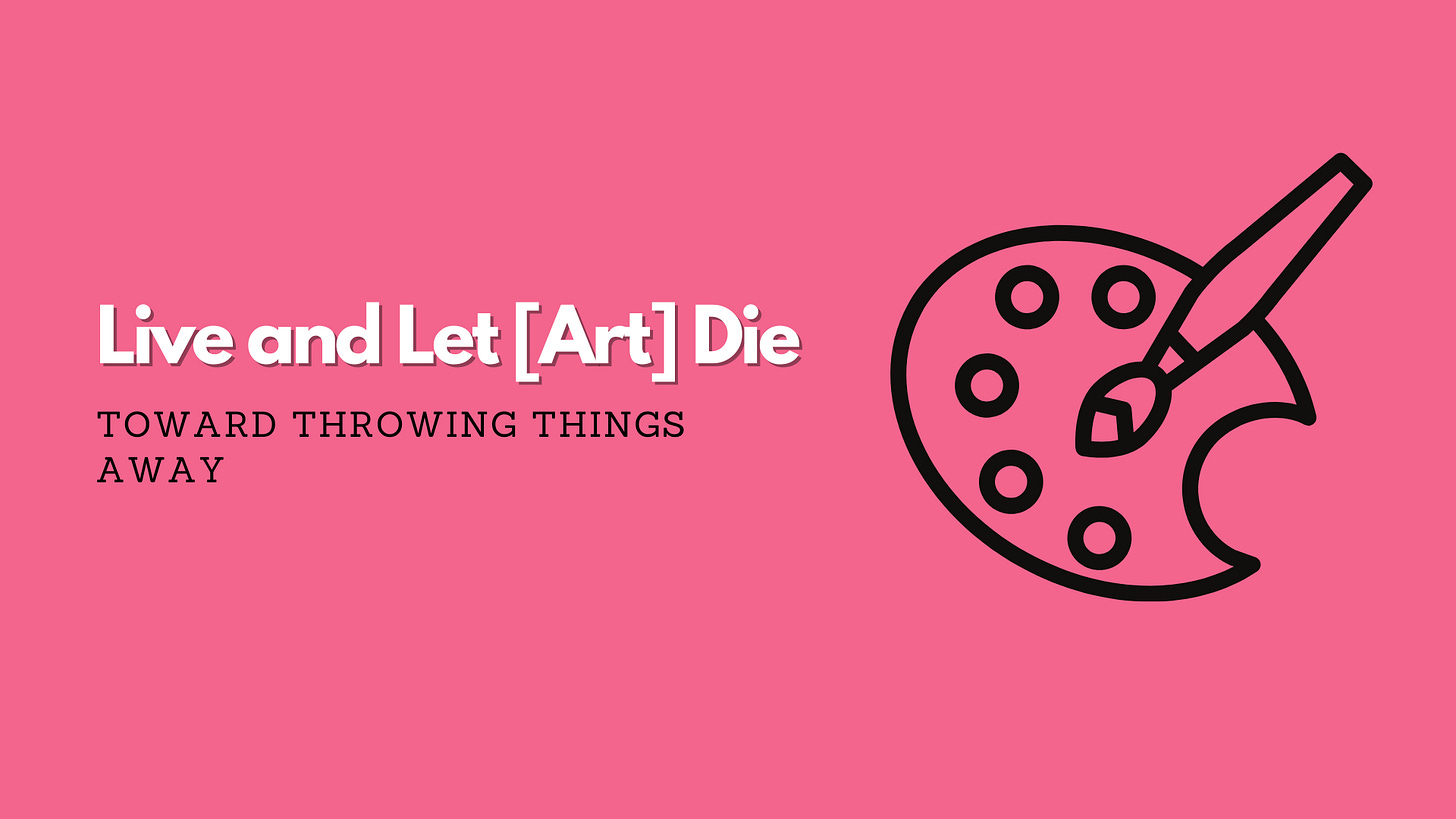Live and Let [Art] Die
Toward Throwing Things Away
The internet promised us forever.
Every upload was a time capsule, every post a monument. We told ourselves permanence would dignify our work. If it lives on a server, then surely it matters. If it can be replayed, remixed, react-ed into eternity, then maybe—just maybe—we’ve outsmarted mortality.
And then an odd tenderness sneaks in through the cracks: a game that only exists on Halloween, a little itch page that wakes once a year so you can carve a pumpkin and then—poof—back to sleep.
Or Robert Ashley, sharing on his podcast that drops an episode sometimes years apart, telling the story of a game that was never made, and somehow the absence becomes the art, the negative space holds more feeling than a neatly shipped product.
Meanwhile, the algorithm taps its watch.
“Is this the next Undertale? Stardew? Is it 10/10 on YouTube?”
We’re trained to make only what can be ranked, archived, and SEO’d—objects sturdy enough to sit in a museum of feeds for the rest of time.
But most art isn’t a museum piece. Most art is a mayfly.
I’m reminded—daily—by the two artists living in my house, ages six and three.
They create constantly. The output is prodigious: church coloring sheets, school collages, accidental modernism done in glue stick and goldfish crumbs. We keep a few. Most of it… goes away. There’s a pang in admitting that. But the kids don’t make with a ledger. They don’t worry about archival-quality paper.
They make because making is the point. And then they make again.
My children don’t think in “content.” They think in crayons. They measure the day in smudges and scissor bits and tape. I save the keepers—the piece where the colors found each other just right, the note where a letter shape finally clicked. The rest becomes a short-term gallery on the fridge and then, respectfully, recycling.
I used to feel guilty about that. Now I’m starting to feel grateful. Their practice is saner than mine. There is just art. There is just making. There is just doing.
What if that’s not childishness but wisdom?
The un-collectible good
Permanence is a decent goal for certain things: marriage vows, covenants, the memory of someone we loved. But permanence is a poor framework for creativity. When “this must last forever” becomes a part of the process, we stop trying ideas that can’t carry the weight of forever. We bury the sketchbook and only show up with bronze statues.
Ephemeral art does a different kind of good:
It teaches attention. If the game fades at midnight, you show up at 11:53. Scarcity becomes presence.
It disarms perfectionism. If today’s thing expires, then it doesn’t need to be “the next Stardew Valley.” It just needs to be today’s offering.
It invites play. The pumpkin’s face doesn’t have to be definitive. It only has to be delightful… for tonight.
Ephemera resists the permanence-pressure of the feed. Not everything needs to be optimized for a billion strangers and their grandkids. Not every livestream needs to be a library resource. Some things can do their work and then willingly make space for the next grace.
Make the thing that will not last.
Make it with care.
Make it like breath: in, out, given back.
Save a few. Let most go. Trust that endings are not failures; they are frames.
Live and let art die. And then—tomorrow—live and make again.



